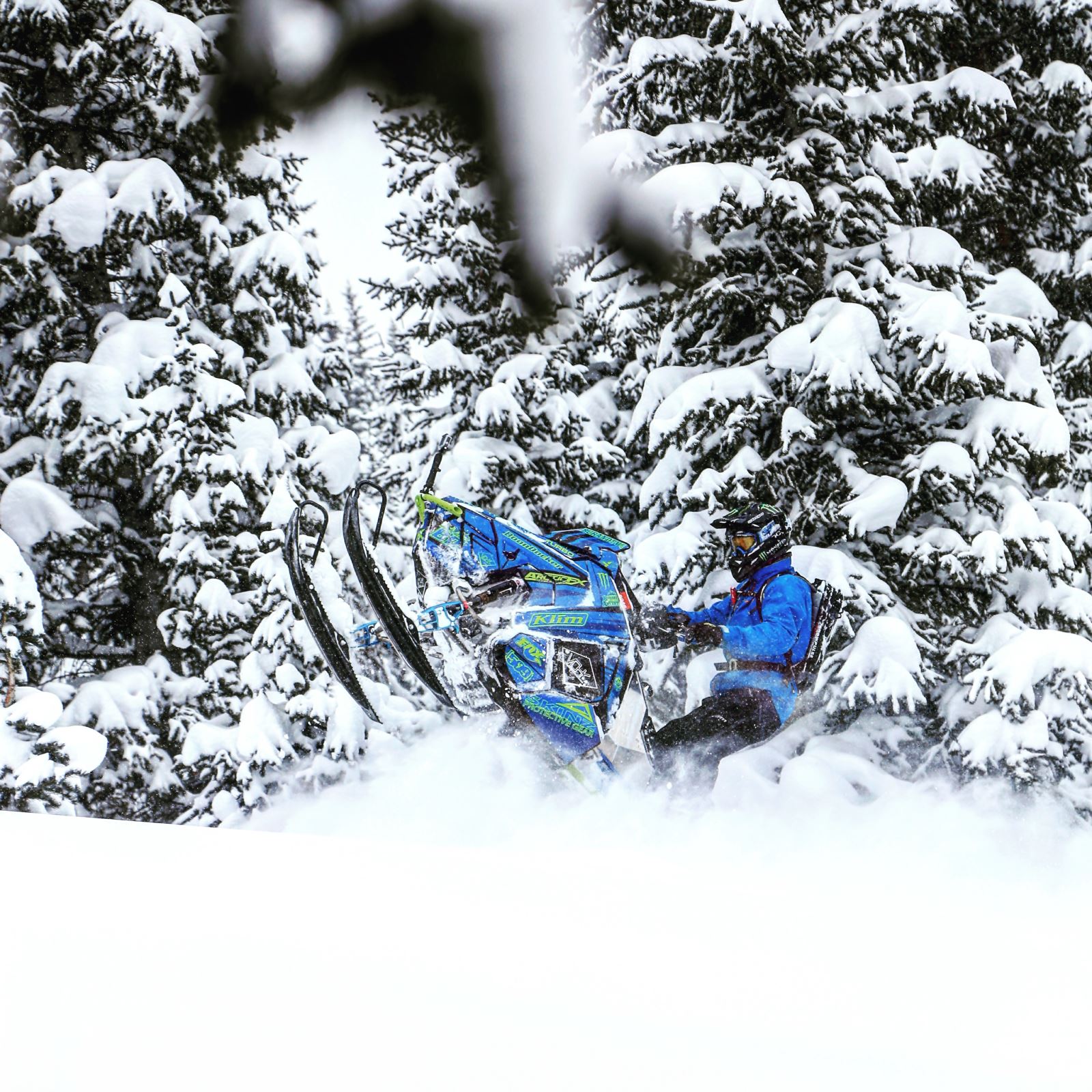
SH: So talk about what advantage does a light snowmobile like this get you in the backcountry? What do you feel?
CB: Well, the first thing that you feel is, I mean, and this is the neat part about riding a sled like this. The first foot I rode it going in from the shop to the trailer, you can feel it. I mean, it's literally that big of a difference. It feels like it’s floating. It's not working hard to move forward. That really translates the same out on the snow. It doesn't get stuck because it always wants to go up. It wants to lift. You can get it stuck. Trust me. It happens, but you’ve got to mess up.
We talk about how easy the Axys is to ride over the Pro. You take that much weight off and, I mean, it literally is so easy to ride that it can be hard to ride, if that makes sense. It takes very little input to make it actually do what you want it to do.
SH: That little trick where you are stopped and punch it and wheelie the sled up and spin it around––like an enduro pivot turn––did you invent that on this sled?
CB: Yeah. Actually, let me take that back. The carbon sled opened my eyes to it. It had that type of ability, but this sled, it took it to a whole other level because with the carbon sled it kind of felt a little out of control. This one, with the sled being even lighter, I mean, it really does feel like what you can do with a dirt bike. You get to a dead end, you pop it up on the rear wheel, you walk it around, and you go back out. You can do that on this snowmobile.
I mean, just like you see all those little clips that I put up on social media… this sled, it can do things that I wasn't ready or knew that a snowmobile could do. That's what was the most fun about this build, is that it basically made me have to relearn how I look at things. When I look at terrain, rethink how and what is actually possible in there. There never was a dead end. It was so cool.
SH: Do you feel like you've compromised any durability with the weight?
CB: You know, that was and is my goal each and every time I build a sled. I don't want it just to be a garage princess, where it just sits there looking pretty. I go out there and I go to ride it and I'm not going to not do something because I'm worried about something breaking. There was a lot of thought and engineering and time from my partners who built this to make sure that that didn't happen.
The biggest question marks were the carbon fiber rails. With Skinz, we did these really cool upper and lower A-arms. Not a chromoly lower––both were aluminum. We did carbon fiber steering rods. I have 300 miles on this sled. Now, that's not a lot of miles, but that's 300 Burandt miles. You know, I really feel that everything met my expectations or my needs for riding in the backcountry.
SH: Are all of the parts you used on this available to the public this coming season?
CB: Not everything. Probably 90 percent of the things are available. There were some one-off items that I got from Polaris and Alternative Impact that aren't available. I had a lightweight flywheel that was a pound lighter than the stock flywheel.
Then I had, from Alternative Impact, they made a couple items out of titanium to replace parts that were steel. One was that steel bar that goes across and holds your muffler on.
The muffler kind of sits on that. They made a ti one of those for me, which was really neat. They actually did the bolt, the engine bolt kit, for me, but that is available to the public now. I was kind of the first one to say, "Hey, here's all the bolts. I'm sending them to you. We need to make all these out of ti." That was cool. I want to say that's about it, honestly. The seat and gas tank is going to be available through Skinz.